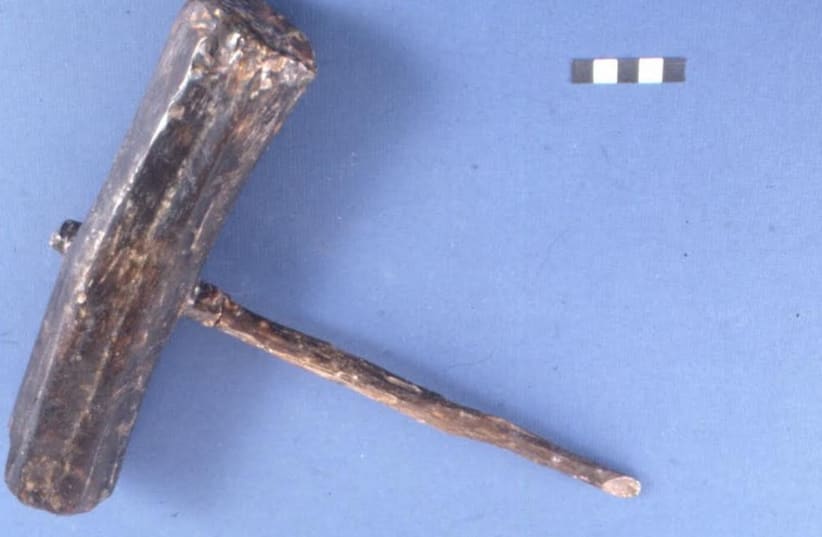JPost Holy Land is a new column that will bring you the latest archaeology news and stories from Israel in collaboration with theUniversity of Haifa.
In 400 BC a merchant ship was bound for the Greek settlement of Dor on the Mediterranean coast of Israel. Due to a navigational error she ran aground in the shallow water off kibbutz Ma‘agan Miçhael, and the crew of four abandoned ship. The shipwreck was soon covered by layers of sand and rested underwater for the next 2,400 years.The wreck of the Ma‘agan Michael ship was discovered in 1985, and excavated over three seasons in 1988 and 1989 by the Leon Recanati Institute for Maritime Studies of the University of Haifa. A large part of the wooden hull of the ship, 11.15 m long, 3.11 m wide and 1.5 m deep, survived. Because of the significance of the archaeological find, the remains were completely excavated, retrieved from the seabed, conserved, and are now on display in the Hecht Museum at the University of Haifa. The timbers of the ship and the other finds have been studied in detail, contributing significantly to our knowledge of how ancient ships were built, and life on board. The ship was 14.4 m long and had a single square sail. She was loaded with a cargo of building stones, and some of the crew's possessions and the carpenter's tools were found in the wreck. She was probably on her maiden voyage.
The late Dr. Elisha Linder, the founder of the Ma‘agan Michael ship project, had a burning desire to build a sailing replica of the ancient ship. His dream is now becoming a reality thanks to generous donations by supporters headed by Sara and Avi Arenson. The keel-laying ceremony took place in July 2014, and launching is planned for 2016.
The shipbuilding project is under way in the workshop of the Nautical Officers' School at Akko, in cooperation with the Israel Antiquities Authority and the Jewish National Fund. The work team, under the direction of Professor Yaacov Kahanov, consists of experienced carpenters, as well as students of the University of Haifa, cadets from the Nautical Officers' School, Israel Sea Scouts, and volunteers who have joined in this unique opportunity of gaining first-hand evidence of ancient shipbuilding techniques and seamanship.
Dr. Deborah Cvikel is a researcher at the Leon Recanati Institute for Maritime Studies at the University of Haifa, Israel. Her areas of research and teaching are maritime history based on underwater archaeology, seamanship and ship-handling, and ship construction. Since 2002 she has been excavating shipwrecks and directing underwater surveys at Akko, Atlit, and Dor/Tantura, Israel.
